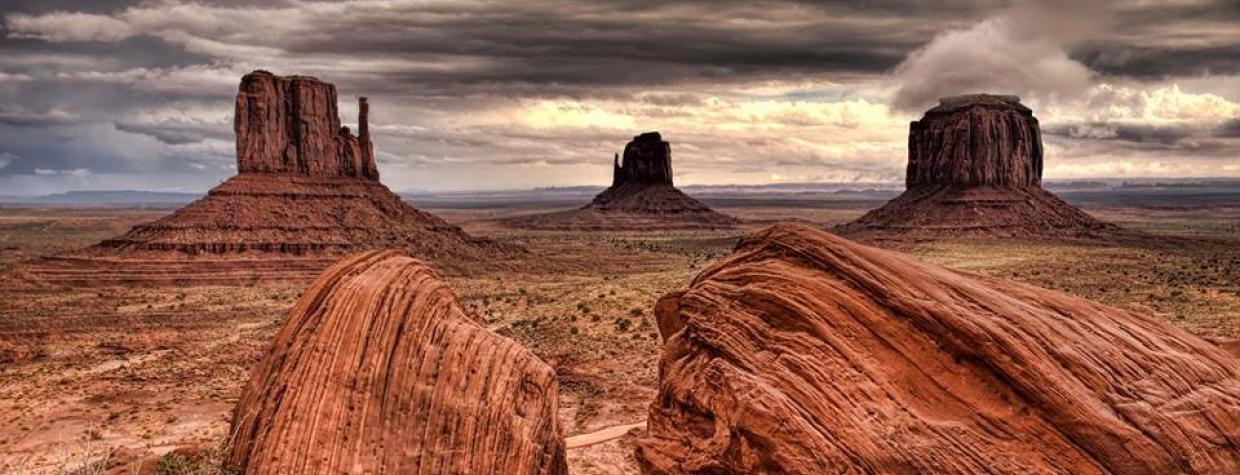Half a century ago, and just months apart, two celebrated movies were shot in Monument Valley, and they couldn't be more different.
Sergio Leone's Once Upon a Time in the West and Stanley Kubrick's 2001: A Space Odyssey, both released in 1968, used the Navajo Nation landmark as a backdrop for filming in 1967 and 1968.
For Leone, the landscape gave him an opportunity to pay homage to a legendary director. John Ford, best known for his collaborations with John Wayne, put Monument Valley on the national map with his 1939 film Stagecoach. Other directors and film stars had taken notice of the formations over the decades as they drove past to work in the region, but none put their lens on Monument Valley. Ford changed that as he returned to the area with nine other films, including one of the finest Westerns ever made, The Searchers.
In Ford's wake, scores of films have featured Monument Valley, which straddles the border between Arizona and Utah. They include Forrest Gump, Mission: Impossible 2, Easy Rider, Back to the Future Part III, National Lampoon's Vacation and the 2013 version of The Lone Ranger. But perhaps none of the directors involved in these projects were as dedicated to the Ford tradition as Leone.
Leone was so keen to shoot in the area that he changed his standard set of practices. Once Upon a Time in the West was actually the first of the "spaghetti Westerns" to be filmed outside Europe. Typically, these projects were shot in Spain or Italy. But Leone was set on honoring Ford. In fact, on the initial scout of Monument Valley, Leone is said to have memorized all the spots used in Ford films and pointed them out to his crew.
Matching Monument Valley to Italy proved to be something of a challenge. The red dirt in Italy looked darker on camera than the light brown soil of Monument Valley. The crew brought in bags of red dust to fake it. In one scene, they used fans to blow this false dirt into a saloon, at the eye level of the cast.
Turning Monument Valley into an alien landscape was easier. The valley is briefly visible in 2001, during a surreal exploration sequence toward the end of the film. The telltale features of the Valley are discernible but faint, with a bluish tint.
The location work at Monument Valley harked back to an older tradition of filmmaking, but much of 2001 was experimental and groundbreaking. Widely regarded now as a classic, 2001 is also a bleak warning about the future and the perils of artificial intelligence. The film grew out of The Sentinel, a short story written by Arthur C. Clarke, and was shot mostly on a soundstage in London. Filmmakers needed a massive stage space to experiment with new technologies, including an oversized "centrifuge" used to replicate the effects of gravity during spaceflight.
Monument Valley Navajo Tribal Park is open to visitors and managed by the Navajo Nation. Many visitors see it on a scenic drive through the park. Fittingly, one of the stops along the way is John Ford's Point.
— Jason Strykowski

